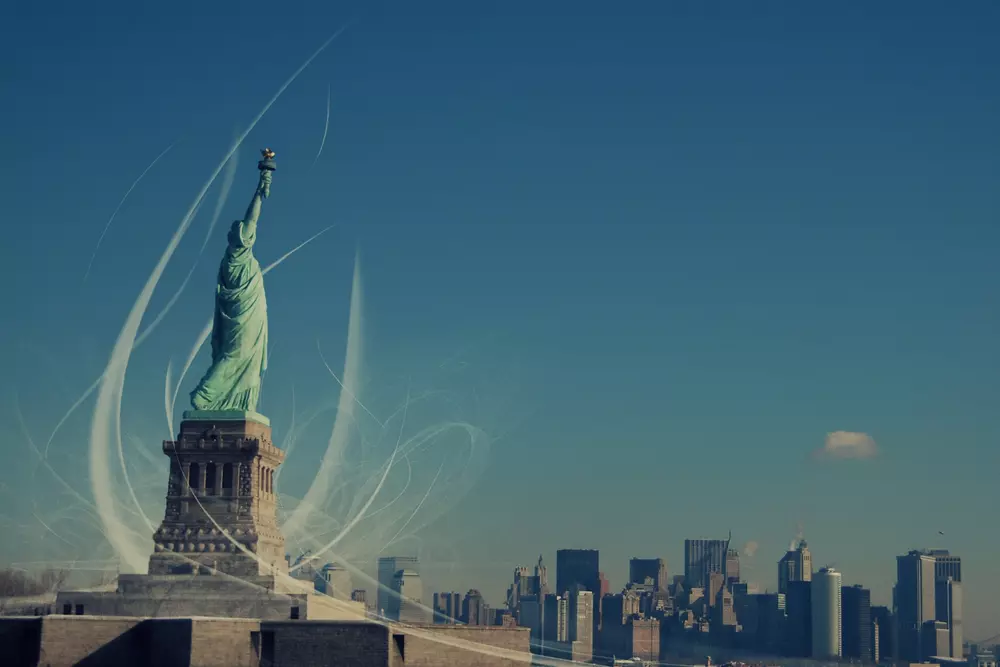Today, we have prepared for you the story of the creation of the American flag. And it's far from being as dull as one might think. For instance, did you know that the flag was born out of Americans' reluctance to pay taxes? One version of the flag was drawn from memory, getting the stripes mixed up.
In our article, we will tell you about the preconditions for the appearance of the US flag, the myths associated with it, and the journey the main symbol of America has undergone.

A Brief Prehistory of the American Flag
The numerous depictions in culture and the iconic photograph of the flag being planted on the Moon in 1969 have imprinted the US flag not only in the memory of Americans. But how did it come into being? Let's find out.
The year is 1776. America is divided into 13 colonies, with delegates from each forming the Continental Congress. This body effectively governs the country and makes the most important decisions. On July 4 of that year, the Congress adopted the United States Declaration of Independence. Independence meant that the USA was no longer a collection of British colonies but a sovereign state. This document marked the end of years of struggle with England for freedom from taxes. Recall events like the "Boston Massacre," where the English shot unarmed Massachusetts residents, or the "Boston Tea Party," where a massive shipment of British tea was thrown overboard.
Throughout this time, American ships sailed under the Continental flag — a slightly modified version of the flag of the British East India Company. But not everyone used the same flag; there were yellow flags with a snake, a lone pine on a white background, and even a knight's hand ready to strike. Ambassadors received inquiries from other nations: "What's happening over there, under which flag will you actually sail?". So, the question of adopting a single national symbol became urgent.

The Birth of the United States of America Flag
In mid-June 1777, the Continental Congress reconvened and approved a new flag. The resolution stated: the flag consists of 13 stripes — symbols of the states, and 13 stars on a blue background — a new constellation. George Washington even thought that the red stripes represented the homeland, the white ones signified what had separated from it, and the stars were plucked from the sky. But these were just words, and the flag's design was yet to be made. The task fell to Francis Hopkinson — a lawyer and one of the 13 founding fathers.
They took the familiar flag of the British East India Company as a base: the stripes were retained, but the rectangle with crossing stripes was discarded and replaced with stars on a blue background. The design of the US Flag differed from the original concept in details. For instance, the stars were initially six-pointed but later became five-pointed. This change is explained by the legend of seamstress Betsy Ross.
According to popular tales, she was visited in her workshop by delegates on Washington's advice, with a request to make a flag. Ross said that the flag shouldn't be square, and the stars were better as five-pointed — otherwise, it would be too cumbersome to embroider. Washington shrugged and agreed. The Congress, too, looked at the designs and didn't argue.
But why is this a legend? Because it's only supported by the story of Betsy Ross's grandson and members of his family in preparation for the US centennial celebration. The newspapers quickly picked up the beautiful story, but no one could confirm it - no documents were found in Congress about it. And it seems somewhat unseemly for Washington, who was a general, to be visiting seamstresses. However, if you're getting American citizenship, it's better to remember this story — it is still presented as reality in history textbooks.

Design changes
- 01.The Union American flag remained in this form for 18 years. The first change was unorthodox. In 1779, Captain John Paul Johnson sailed to the Netherlands with a captured British ship whose flag had been torn off. At the port, the frigate was recognized as a pirate, but John decided not to surrender. To convince the Dutch, he quickly crafted a flag from memory. The result was subpar — blue was unexpectedly added to the red and white stripes. Nonetheless, the Dutch were not deterred. This sparked a long marathon of changes, during which the flag was modified 26 more times.
- 02.The next change occurred in 1795. Vermont and Kentucky joined the US, and two more stars were added.
- 03.19 years later, an event happened that explains Americans' pride in their flag. Poet Francis Scott Key, living in Fort McHenry, came under fire from British ships. After a night of bombardment, the poet noticed that the fort still stood, and the American flag was flying above it. This deeply moved Francis, and he wrote a poem celebrating the flag. Surprise — in 1931, this piece became the national anthem.
- 04.But let's go back to 1818. More and more states were joining, and it was unclear whether to add them all as stars or not. Then, President James Monroe signed a law stating that yes, they should be added.
- 05.By 1863, there were already 35 stars, and by 1931 — all 48. Congress developed documents regulating the proportions, colors, and sizes of the flag's elements, and by 1949, National Flag Day became a state holiday.
- 06.The Flag Code was introduced — to ensure people treated the flag with care and according to tradition. Desecration of the flag was punishable by fines or even imprisonment until 1990 when the Supreme Court ruled it a violation of free speech.
- 07.In 1958, plans were made for Alaska and Hawaii to join the US. Among the many proposals was one from Robert Heft, a student at Lancaster School. He received a C-minus for his work and was dissatisfied. His teacher responded, "I'll only change the grade if Congress accepts your work." Jokingly or not — in 1960, Congress indeed adopted this design.
Now, the national flag flies round-the-clock at the Marine Corps Memorial, the White House, the Washington Monument, and other historical landmarks. It is raised on holidays and lowered during mourning and memorial days. And in many schools, students regularly (from once a day to once a month) recite the Pledge of Allegiance to the flag.
There's a current project to incorporate Puerto Rico. 97% of the island's residents voted for this in a referendum. Perhaps in the future, we will see a 51st star on the flag.

From its creation story to myths and facts, the American flag is not only a symbol of the nation but also a testament to the country's changes and development. Understanding the history of the flag opens new horizons for appreciating the cultural and historical heritage of the United States.
Interested in learning more about the symbols and history of America? American Butler offers tours that introduce you to the rich cultural legacy and historical sites of the USA. Book your tour now and embark on an exciting journey across the country!





























